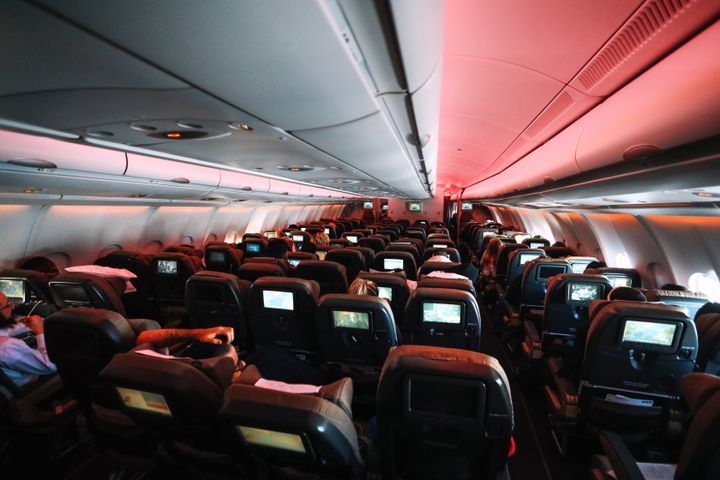
Picture this, you pull an all-nighter on your last night at university, ready to catch an early morning coach to Heathrow Airport.
And then the next thing you know, your flight is delayed by over two hours, you have to pay extra for a luggage that was well within the weight limit, a girl throws up next to you and you almost get diverted to another city because the plane can’t land at its destination due to the horrible weather.
Oh, and a person actually dies on your flight.
Five years ago, in June 2018, I was flying from London to Mumbai, when roughly four hours into the flight, one of the flight attendants onboard announced into the speakers: “Are there any doctors onboard? We are in immediate need of medical assistance here.”
For some stupid reason, my immediate reaction was to think that someone was giving birth. However, I quickly realised it was something a lot more harrowing as I watched about 5-6 people, who happened to be doctors, get up to help the cabin crew.
It was chaos. The flight attendants were bringing out emergency medical kits and every other medical equipment they had, hoping to do their best to assist the doctors trying to help.
At this point we were above sea. There was nowhere we could land. The closest destination would have been Istanbul, and that too was a little way off.
The doctors tried their best to do their job with whatever resources they had available onboard. But when the cabin crew started handing out pens and paper to a bunch of people surrounding the point of action, and the doctors looked at one another, it became abundantly clear what had happened.
Someone had just died on board. No one could believe it. To say everyone was shocked was an understatement.
As word got around the plane, it was revealed that the person who died was a 45 year old man, with the apparent cause of his death was pulmonary embolism — it occurs when a blood clot gets stuck in an artery in the lung, blocking blood flow to part of the lung. Blood clots most often start in the legs and travel up through the right side of the heart and into the lungs, a condition known as deep vein thrombosis.
Blood clots can develop in someone’s leg due to being inactive for a long period of time. For example, on a long-distance flight.
What’s worse is that he had his family on board. And since they were from Mumbai, it was decided that the plane would not divert to a nearby airport but rather fly on as scheduled. I could practically feel the plane pick up its speed.
According to flight attendant Sheena Marie on TikTok, it is not uncommon for deceased passengers to be left where they are.
“If they have a heart attack and die, and there is nothing we can do about it, and we can’t start CPR, we are just going to wait until we get to our final destination,” she said in a viral (but now currently unavailable) TikTok video.
Also, cabin crew are legally not allowed to declare someone as dead, so if they start administering CPR, they cannot stop until a medical professional arrives. The cabin crew is also in constant contact with on-call flight doctors via MedLink in case there are no medical professionals on board.
Most airlines also have mortality kits which include body bags, but if your airline doesn’t carry it, chances are they will cover the deceased passenger up with a blanket.
The International Air Transport Association (IATA) also has general guidelines for what an airline is supposed to do in the event that someone dies on board.
According to IATA, if the person is already presumed dead, crew members should tell the captain so that they can alert the destination to make appropriate arrangements. It is not necessary for the plane to make any emergency landings in this event, and the decision over what to do next is usually left up to the medical professionals at MedLink and the captain.
This is what happened when we got to Mumbai. There was no emergency landing in another country. The weather in the city was horrible, and it took the pilot three tries to manage to land us safely at the airport. And as we filed out of the plane, there were paramedics waiting to pick up the deceased passenger.
In the end, it was a harrowing experience for everyone on board, but most importantly for the family of the deceased.
There is always a chance of going into pulmonary embolism on long distance flights, which is why doctors advise passengers to take a few laps on the plane every couple of hours just to keep the body moving – I know I will every time now.